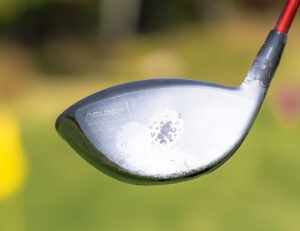If you’re a regular client of mine you’ve heard this statement quite a bit. Particularly out on the golf course. And if you’re a Florida Golf School Vacations client within any of our golf school programs, get ready to hear this phrase a lot. “Great miss!” Playing your good miss is the key to reducing scores and enjoying the game even more.
Playing your great miss is an absolute if you intend to reach your potential as a gofer. Ask any touring professional, and they’ll tell you most all shots they attempt are not perfect. And do not produce the exact outcome they were intending. Tour professionals hit 1 or 2 shots per round they qualify as being perfect. Therefore, the remainder of all their strokes are misses. Their misses are great, in comparison to yours. That’s why I thought we’d explore the phrase play your good miss, within this month’s blog post.
What is a Good Miss?
A good miss is any golf shot that produces a result that does three things.
- First, a good miss keeps you in play.
- Second, a good miss advances the golf ball as far as it can considering the impact conditions presented when the club strikes the ball.
- And third, a good miss allows you an opportunity to not add additional strokes to your score.
Keeping those 3 elements in mind, go back and review your last 5 to 6, 18-hole rounds of golf in your mind. Be objective when conducting your evaluation. As you do, count how many perfect shots you hit within each round. Odds are like the pros, 1, maybe 2 shots you can qualify as perfect. The remainder of the shots you hit could be a good miss.
Now go back over those same rounds and evaluate all the other missed shots and see which ones meet the 3 criteria points. Those are your good misses. To breakthrough any milestone scoring barrier, you’ve got to start identifying your good misses more regularly. And more quickly. As well as how to use that information to create better missed shots when playing. Without this critical information you will always flounder at the scoring level you currently occupy.
How do you Create and Play Your Good Miss?
Creating your best missed golf shot is much easier than you think. All it takes is
- Understanding your predominant ball fight.
- Making an adjustment to where you aim, so the predominant ball flight dispersion pattern lands in a place on every hole that provides you a good shot with your next stroke.
An Example
If you fade the ball as a right-hander, your predominant ball flight curves left to right. This should be easy to recognize. If it is easy to recognize your predominant ball flight, why do you insist on attempting to correct it mid round? It won’t change. And the more you try to aim for the correction the worse your shots end up not being on the hole you’re intending to play.
The opposite is true if you’re left-handed. A predominant curvature right to left while aiming for the middle will yield an odds-on favorite place to miss your target, left of your aim point. And most likely left, completely left of the hole you’re playing.
Identifying a Good Missed Shot
The first step in creating a good, missed shot in golf is understanding your ball flight tendencies and playing the tenancy to your advantage. Being able to help you understand your ball flight tendencies is what distinguishes me and my team of coaches as being one of the best golf schools in Florida.
If you’re right-handed with a predominant fade, you should always tee the ball on the right side of the tee box. And should always be aiming far enough left as a starting point to allow the estimated amount of curvature of your shots to curve back and land in the middle of the fairway. Likewise, when in the middle of the fairway, should you be taking dead aim at a starting point that allows the average amount of curvature to land the ball pin high and on the green somewhere. Not necessarily exactly on top of the pin position.
Altering your aim point based upon the expected curvature of your ball flight is essential to keeping good misses in play. It’s the one thing you have in common with our all professional tour players. They do exactly that. They take into consideration their predominant ball flight curvature and aim appropriately for the curvature to work the way they intended. Versus trying to fix the curvature in in in the middle of a golf round.
A Good Miss When the Lack of Distance is Your Enemy
Just because you can’t hit a drive 300- yards does not mean that you can’t hit great missed shots. And just because you don’t hit your pitching wedge 170-yards doesn’t mean that the club you choose to hit 170-yards can’t produce a result that allows you the ability reduce your scores versus add to your scores.
Many times, great missed shots are ignored or forgotten about. This is based upon your ego and the distances you’re trying to hit shots. Versus choosing the club that will travel the carry distance necessary to avoid unnecessary risk. And if your shot does miss your intended target short yet places you in a position to recover, are you recognizing the shot as a good miss?
According to Arccos, my preferred statistics provider, well over 87% of all missed greens are missed short. And I would venture to say if quizzed, each golfer who takes ownership of their game, would admit to taking one less club than they should have when missing short of a green.
I might be speaking in generality making this statement. I’m sure there are times when the shorter club may be the more prudent play. But if your scores average above 85. And your statistics state you’re missing most of your green short. Why would you not take the correct club to hit the best miss shot possible? Ensuring yourself a higher probability of your ball landing pin high to any pin location on any green.
Creating a good mess requires that you take the proper club to ensure the carry distance of any shot can be reached should perfect impact conditions not exist for your next swing.
Anticipating and Playing Your Good Missed Shots
Understanding the predominant curvature your ball flight, along with understanding carry distance and choosing the right club, allows you a realistic opportunity to hit more missed shots you’ll qualify as good versus bad. Doing so requires 3 decisions:
- Your club choice.
- Your aim point to start the shot on.
- And the ending aim point where you want the ball to land.
When I shot the video for this blog post, I knew my back hurt. But did not know the severity of the injury I sustained. Nevertheless, I took into consideration not only my predominant swing and ball flight pattern. I also took into consideration what I felt my body could produce. I kept all 3 variables in mind when hitting the shot, you see in the video.
I knew how far the ball could fly based on my abilities that day. I knew the width of the fairway and my starting aim point that allowed the biggest margin of error. While at the same time provided for the shot to land in an optimal area. Allowing me an opportunity to hit my second shot to the green below. Had I not kept my ego in check. And dismiss the fact that I had a spinal injury. And just went ahead and aimed down the middle. My ball most likely would have been lost out of bounds to the right of the fairway.
Planning to hit your predominant ball flight to an average distance location is not enough sometimes. You must anticipate other variables that will affect your swing and how the ball flies. You also must anticipate your next shot and understand how this shot is going to affect how you play all subsequent shots.
Reward Yourself when You Play Your Good Miss
Whenever I play and hit a great miss, I reward myself with positive self-talk. My playing partners might moan and groan. Or even try to make me feel better about the shot I just missed. But the first thing out of my mouth after evaluating a shot that I determine is a good miss, are the words “Great Miss John!”
You should be doing the same. Instead of beating yourself up internally or externally to others, why not pat yourself on the back? If the shot you just hit meets the 3 three criteria mentioned at the beginning of the blog post, why are you not patting yourself on the back? And reaffirming to yourself you just hit a good miss shot?
You’re going to be very surprised when change this dynamic. Surprised at how your entire attitude towards golf will change for the better. Surprised at how many more realistic opportunities you have to score par or better. And in turn, surprised at the reduction of scores you shoot. When you choose to play your good misses versus wallow in the frustration of your not so perfect, perfect shots.
There is no such thing as perfect in golf. If you believe otherwise, you’re fooling yourself. None of the best golf schools in Florida should be telling you otherwise. Look back at a previous blog post that speaks about expectations and failures when perfection is the goal. But more importantly, realize that you’ll reach your potential as a golfer when you drop the idea of being perfect. And accept the fact that you routinely and consistently can hit a good miss. And play for that good miss more often.
Conclusion
Make it a point of emphasis when you play your next 18 holes of golf to reward yourself with the phrase, “Good Miss”. Playing your good misses provide you an opportunity to understand what you’re capable of producing with your current skills. Great misses enhance that opportunity further. But to hit a great miss, you need to create your own luck. By planning for your tendencies to work within the shot parameters provided you.
I hope that one day when I go play golf, I can hear a resounding phrase coming from all golfers no matter where they are on the golf course. That phrase being “Good Miss!” being heard everywhere on the course. Whether you choose to attend one of our Florida Golf School Vacations programs. Or if you’re just playing a round of golf. If this phrase is used more often by all golfers, maybe the grill room will have a better atmosphere after your round. And maybe, all golfers everywhere are happier and enjoying golf even more.






